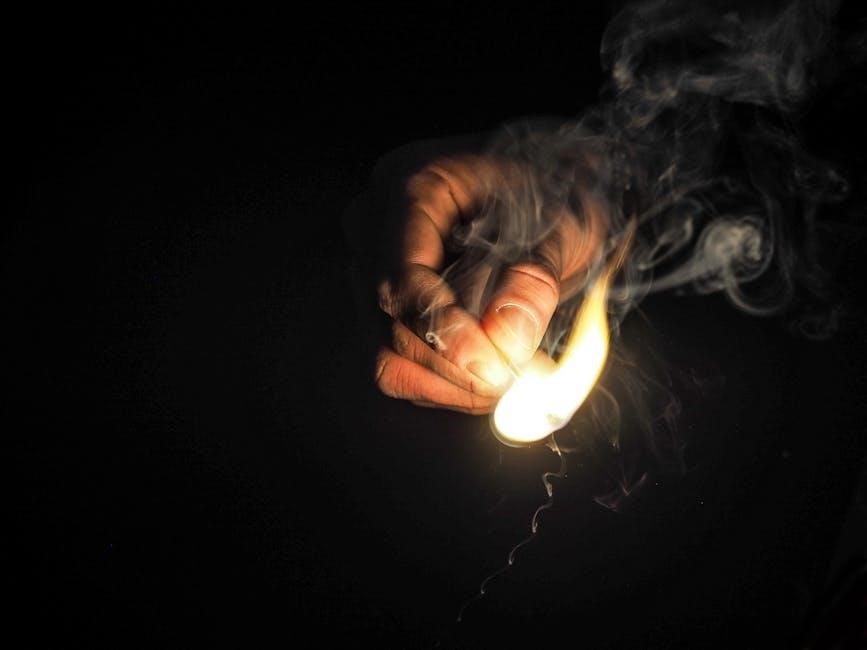Heat & Glo Remote Control Manual: A Comprehensive Guide
This guide offers comprehensive support for Heat & Glo fireplace remote controls. We delve into essential aspects, from basic functions and programming to troubleshooting common issues. Learn how to pair your remote, identify problems, and access Heat & Glo manuals for detailed assistance, ensuring optimal fireplace operation.
Understanding Heat & Glo Fireplace Remote Controls
Heat & Glo fireplace remote controls offer convenience and enhanced control over your fireplace, allowing you to adjust settings from anywhere in the room. These remotes typically utilize radio frequency (RF) signals to communicate with a receiver unit connected to the fireplace. Understanding the basics of how these remotes work is crucial for effective operation and troubleshooting.
The remotes generally feature buttons for turning the fireplace on and off, adjusting flame height, setting room temperature, and activating timer functions. Some models also include fan control and auxiliary functions. A clear LCD screen often displays information such as the current time, room temperature, and battery level.
Different Heat & Glo models may have varying remote control systems, such as the IntelliFire Plus system. It’s essential to consult your specific fireplace model’s manual to understand the features and functions of your remote control.
Proper maintenance, including replacing batteries when needed and keeping the remote clean, will ensure optimal performance. Familiarizing yourself with the remote’s layout and functions will allow you to easily adjust your fireplace settings for maximum comfort and enjoyment. Understanding these basic principles can significantly improve your experience.
Essential Functions and Programming
Operating a Heat & Glo fireplace with a remote control requires understanding its essential functions and programming. The primary functions typically include on/off control, flame height adjustment, thermostatic control, and timer settings. Programming the remote involves setting the desired temperature, configuring the timer, and potentially pairing the remote with the fireplace receiver.
The on/off function allows you to easily ignite or extinguish the fireplace with a simple button press. Flame height adjustment lets you customize the intensity of the flame to your liking. Thermostatic control enables you to set a desired room temperature, which the fireplace will maintain automatically; Timer settings allow you to program the fireplace to turn on or off at specific times.
Programming instructions vary depending on the remote control model. Consult your Heat & Glo manual for specific instructions on how to program these functions. Generally, it involves using the remote’s buttons to navigate menus and adjust settings. Many remotes also feature a learning function, where they can be paired with the fireplace receiver to ensure proper communication.
Understanding these functions is key to maximizing the convenience and comfort of your Heat & Glo fireplace.
Pairing the Remote Control with the Fireplace
Pairing the remote control with your Heat & Glo fireplace is a crucial step to ensure proper communication and functionality. This process involves establishing a connection between the remote’s transmitter and the fireplace’s receiver, allowing you to control the fireplace remotely.
The pairing procedure varies depending on the specific model of your Heat & Glo fireplace and remote control. Generally, it involves accessing a pairing or learning mode on both the remote and the fireplace receiver. This may require pressing and holding specific buttons on each device simultaneously or following a sequence of button presses as outlined in the manual.
Consult your Heat & Glo manual for detailed instructions on the correct pairing procedure for your specific model. The manual will provide step-by-step guidance, including which buttons to press, any necessary timing considerations, and visual cues to indicate successful pairing.
Successful pairing is essential for the remote to effectively control the fireplace. If the remote is not properly paired, it may not be able to turn the fireplace on or off, adjust the flame height, or control other functions.
If you encounter difficulties during the pairing process, double-check the instructions in your manual and ensure that you are following them precisely.
Troubleshooting Common Remote Control Issues
Encountering issues with your Heat & Glo remote control can be frustrating, but many common problems can be resolved with simple troubleshooting steps. This section addresses frequent issues and provides practical solutions to restore your remote’s functionality.
One common issue is a lack of response from the fireplace when using the remote. Before diving into more complex troubleshooting, ensure that the batteries in the remote are fresh and properly installed. Low battery power is a frequent culprit behind remote control malfunction.
Another potential problem is signal interference. Radio frequency signals can be disrupted by other electronic devices or physical obstructions. Try moving closer to the fireplace or repositioning the remote to improve signal strength.
If the remote still doesn’t work, check that the fireplace is in “remote” mode. Some fireplaces have a switch that allows you to select between manual and remote control. Ensure the switch is set to the “remote” position.
If these basic steps don’t resolve the issue, consult your Heat & Glo manual for more specific troubleshooting guidance related to your model. The manual may offer solutions for specific error codes or unusual behavior.
If all else fails, contact Heat & Glo customer support for further assistance. They can provide expert guidance and help you diagnose and resolve more complex remote control problems.
Remote Not Responding: Battery Issues
One of the most frequent causes of a non-responsive Heat & Glo remote control is battery-related problems. Addressing these issues promptly can often restore full functionality without the need for more complex troubleshooting.
The first step is to check the batteries themselves. Ensure they are correctly installed, paying close attention to the polarity (+ and -) markings. Even if the batteries appear to be correctly installed, try removing and reinserting them to ensure a good connection.
Next, verify the battery voltage. Even new batteries can sometimes be defective or have a lower voltage than expected. Use a battery tester or multimeter to check the voltage of each battery. Replace any batteries that are below the recommended voltage level for your remote.
Consider the type of batteries you are using. Alkaline batteries are generally recommended for remote controls due to their longer lifespan and consistent power output. Avoid using rechargeable batteries, as they may have a lower voltage than alkaline batteries and may not provide sufficient power for the remote to function properly.
If you suspect that the batteries are draining quickly, even when the remote is not in use, there may be a power drain issue. In this case, remove the batteries when the remote is not in use to prevent further drain. If the problem persists, contact Heat & Glo customer support for assistance.
Remote Not Responding: Transmitter Problems and Resetting
If replacing the batteries doesn’t solve the issue, the problem might lie within the transmitter itself. The transmitter is responsible for sending radio frequency signals to the fireplace receiver, and any malfunction here can prevent the remote from working.
One common cause is a loss of synchronization between the remote and the receiver. This can happen due to power surges, interference from other electronic devices, or simply the passage of time. To address this, resetting the transmitter is often necessary.
Start by consulting your Heat & Glo fireplace manual for specific instructions on resetting the transmitter for your model. The process typically involves locating the reset button on the receiver module, usually found near the fireplace, and pressing it while simultaneously pressing a specific button on the remote.
If you cannot locate the reset button or are unsure about the procedure, refer to the manual or contact Heat & Glo customer support. Attempting to reset the transmitter incorrectly could potentially damage the system.
Another potential issue is signal interference. Radio frequency signals can be disrupted by other electronic devices, such as cordless phones, Wi-Fi routers, or even certain types of lighting. Try moving the remote closer to the fireplace and away from potential sources of interference.
Identifying the Reset Module and Procedure
Locating the reset module is crucial for resolving remote control issues. Typically, this module is situated near the fireplace, often hidden behind an access panel or within the firebox itself. It’s usually a small, rectangular box with wires connected to it.
Consult your Heat & Glo fireplace manual for the precise location of the reset module for your specific model. Diagrams and detailed descriptions can be invaluable in this process.
Once you’ve located the module, carefully examine it for a reset button. This button may be labeled “Reset,” “Sync,” or something similar. It might be a small, recessed button that requires a pen or paperclip to press.
The reset procedure generally involves pressing and holding the reset button on the module while simultaneously pressing a specific button on the remote control. The exact button combination will vary depending on your model, so refer to your manual for guidance.
If the reset module has an indicator light, observe its behavior during the reset process. The light may blink or change color to indicate that the reset is successful.
If you are unable to locate the reset module or are unsure about the reset procedure, don’t hesitate to contact Heat & Glo customer support for assistance. Improperly resetting the system could lead to further complications.
Programming the Transmitter

Programming your Heat & Glo transmitter is essential for establishing communication between the remote control and the fireplace receiver. This process typically involves synchronizing the transmitter’s signal with the receiver’s unique code, ensuring that the remote can control the fireplace functions.
Start by ensuring that both the transmitter and receiver have fresh batteries installed. Low battery power can interfere with the programming process. Next, locate the “Learn” or “Sync” button on the fireplace receiver module. This button is usually small and recessed, requiring a pointed object like a pen to press.
Simultaneously, press and hold the “Learn” button on the receiver and a designated button on the transmitter. The specific button on the transmitter will vary depending on the model; consult your Heat & Glo manual for the correct button combination. Continue holding both buttons until the receiver’s indicator light flashes or a beep sounds, indicating successful synchronization.
If the programming fails, repeat the process, ensuring that you are within close proximity to the fireplace receiver. Radio frequency interference can sometimes disrupt the signal, so try moving to a different location.
Once the transmitter is programmed, test all the remote control functions to verify that they are working correctly. This includes turning the fireplace on and off, adjusting the flame height, and activating any timer or thermostat settings.
Available Timer Functions
Heat & Glo fireplace remote controls often include timer functions, enhancing convenience and energy efficiency. These functions allow users to set a specific duration for the fireplace to operate before automatically shutting off, providing both comfort and peace of mind.

The timer settings are generally adjustable, offering a range of durations from a few minutes to several hours. Common timer intervals include 15 minutes, 30 minutes, 1 hour, 2 hours, 4 hours, and up to 9 hours, providing flexibility to suit various needs and preferences. To activate the timer, users typically press a dedicated “Timer” button on the remote control.
After pressing the “Timer” button, the remote’s display will show the available time intervals. Users can then use the up/down buttons or a similar interface to select the desired duration. Once the time is set, the fireplace will operate for the specified period and then automatically turn off;
Some models feature a countdown timer, displaying the remaining time until the fireplace shuts off. This allows users to monitor the timer’s progress and make adjustments if needed. Additionally, certain remotes offer a sleep timer function, gradually reducing the flame height before turning off, creating a more natural and comfortable transition.
Consult your Heat & Glo manual for specific instructions on using the timer functions for your particular remote control model, as the exact steps may vary.
Finding Your Heat & Glo Fireplace Model Number
Locating your Heat & Glo fireplace model number is crucial for accessing the correct manuals, troubleshooting guides, and replacement parts, including remote controls. The model number is typically found on a rating plate or label affixed to the fireplace unit itself.

Start by checking the fireplace’s control cavity, often located behind a removable access panel or door. This area usually houses the gas valve, control module, and other essential components. The rating plate may be attached to the inside of the access panel or on the fireplace chassis within the control cavity.
Another common location for the model number is on the fireplace’s firebox. Carefully inspect the sides, top, and back of the firebox for a label or stamped identification. You may need a flashlight to see clearly in dimly lit areas.
If you have a gas insert, the model number may be visible after removing the decorative front or surround. Look for a label on the insert’s main body or on the back panel.
In some cases, the model number may be documented in your original purchase paperwork, such as the sales receipt or installation manual. If you still have these documents, they can be a valuable resource.
Once you’ve located the model number, write it down for future reference. This information will be essential when seeking support, ordering replacement parts, or accessing specific documentation for your Heat & Glo fireplace.
Accessing Heat & Glo Manuals and Support
Obtaining the correct Heat & Glo manual and accessing reliable support are crucial for effectively operating and maintaining your fireplace, especially when dealing with remote control issues. Heat & Glo provides several avenues for accessing these resources.
The primary source for manuals is the Heat & Glo website. Navigate to the “Owner Support” section, where you can search for your specific fireplace model. Entering your model number will provide access to downloadable manuals, including installation, operation, and service guides;
The website also offers a comprehensive FAQ section addressing common questions and troubleshooting tips. This can be a quick and efficient way to resolve minor issues without contacting customer support directly.
If you require further assistance, Heat & Glo’s customer service team is available via phone and email. Contact information can be found on their website. Be sure to have your fireplace model number readily available when contacting support to expedite the process.

Additionally, many authorized Heat & Glo dealers offer technical support and repair services. Your local dealer can provide hands-on assistance and may be able to diagnose and resolve complex issues.
For remote control-specific support, consult the remote control manual that came with your fireplace. This manual will provide detailed instructions on pairing, programming, and troubleshooting the remote.
Remember to register your Heat & Glo fireplace on their website. Registration allows you to receive important updates, warranty information, and access to exclusive support resources.